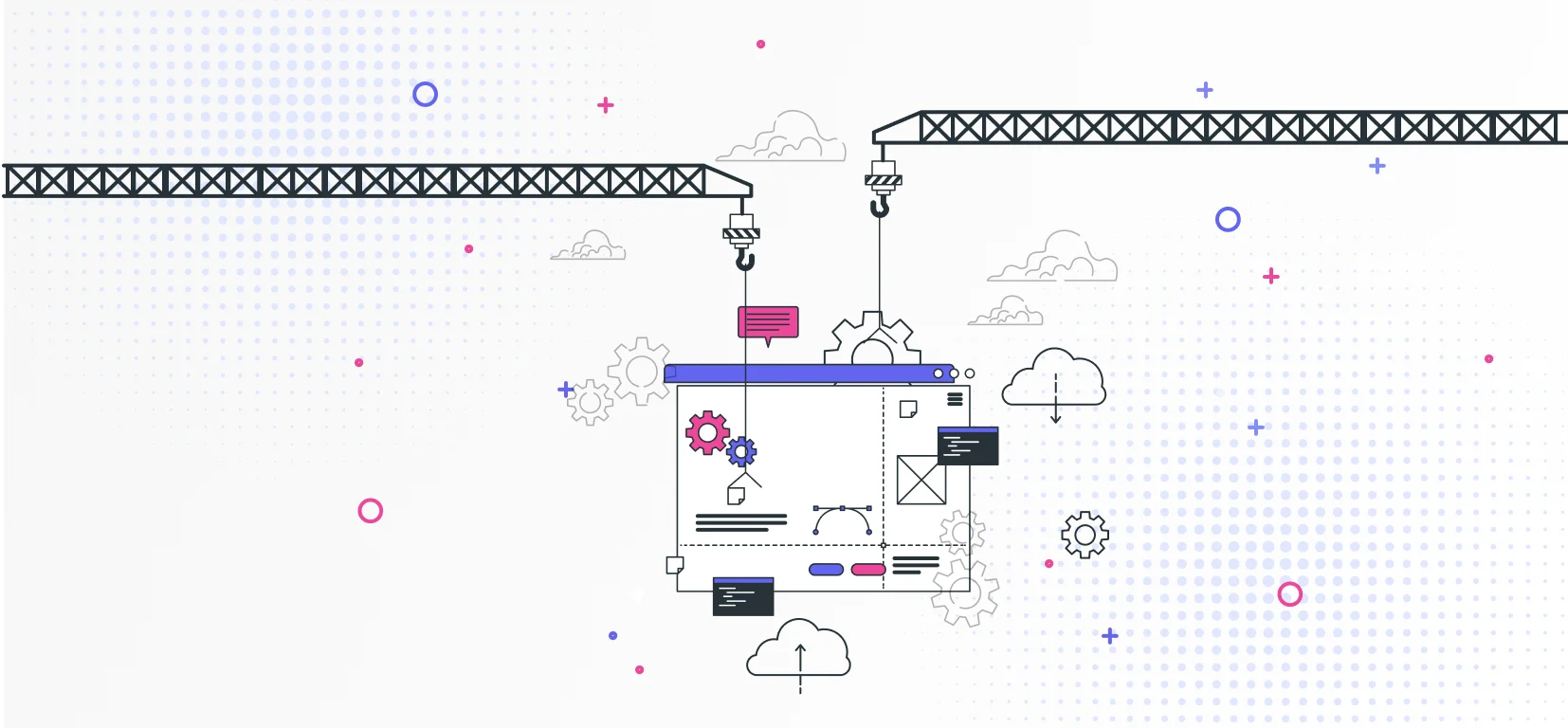- Composable Architecture,
- MACH
Serverless vs. Microservices: The Ultimate Guide


One of the most fundamental problems in computer science is problem decomposition: how to take a complex problem and divide it up into pieces that can be solved independently[1].
Therefore, the art of programming is the art of organizing complexity[1].
In the world of software development, architects and developers face the challenge of organizing these complexities to build the business capabilities of that application. A well-designed architecture lays the foundation for managing complexity effectively.
Software architecture is the art of drawing lines that we call boundaries. Those boundaries separate software elements from one another and restrict those on one side from knowing about those on the other[1].
Everything in software architecture is a trade-off while managing complexity.
Designing well or poor architecture depends on whether you did a trade-off well. For a good tradeoff, as a first job, you need to understand why it is more important than how. You need to understand why you choose to implement a specific solution. A well-designed software architecture provides a structured framework that organizes components, defines interactions, and separates concerns. This makes it easier to control complexity by enforcing best practices, design patterns, and proper layering. On the other hand, a poorly designed architecture can cause increased complexity, making the software to maintain, understand, and extend.
In this article, we will talk about the two most famous architectures: serverless architecture and microservice architecture.
What Is Serverless Architecture?
Serverless architecture is a cloud computing model that allows developers to focus solely on writing code without managing servers or infrastructure.
This approach allows for scalable, cost-effective solutions by automating the provisioning and management of resources. Developers can focus on writing code for their application's core functionality while the cloud provider takes care of tasks like scaling, patching, and capacity management.
By leveraging a serverless point of view, businesses can improve operational efficiency, reduce costs, and quickly adapt to changing market demands.
In addition, you need to know that ‘serverless’ and ‘function as a service’ are not the same thing. FaaS is often confused with serverless computing. However, FaaS is a subset of serverless. The reason for mentioning these functions is FaaS is the most central technology in serverless architectures. Therefore, throughout this article, we mention functions as a part of serverless architecture.
What Is Microservices Architecture?
Microservices architecture enables the breakdown of a large application into smaller, independent services that have their own process and communicate with each other with lightweight mechanisms. These services are highly focused and self-contained — and communicate with each other through well-defined APIs.
Before continuing reading, it will be better for you to read comprehensive guidelines about both Microservice and Serverless Architecture:
Serverless Architecture vs. Microservices Architecture
Both architectures offer powerful tools to build scalable, flexible, and resilient applications in the dynamic landscape of modern software development.
The choice between these architectures depends on various factors, including the application's size, complexity, expected traffic patterns, and the development team's expertise. Some applications might even combine both approaches, leveraging serverless functions within a broader microservices ecosystem to strike a balance between ease of development and granular control. Therefore, it is really important to learn about their differences and similarities.
Similarities Between Serverless Architecture and Microservices Architecture
Decoupling and Independence
Both architectures promote the idea of breaking down complex applications into smaller, independent units. In microservices architectures, each service is a decoupled and autonomous component, while in serverless, functions are individual units of execution.
This decoupling allows teams to work independently on different parts of the system, leading to easier maintenance and scalability.
Scalability
Both architectures can scale components independently based on demand. In microservices, you can scale individual services horizontally to handle more requests. In serverless, the cloud provider automatically manages the scaling of functions, ensuring that resources are allocated dynamically as needed.
Ease of Deployment
Both architectures aim to simplify deployment processes.
In microservices, since each service is independent, updates or changes to one service can be made without affecting others. If you design your microservices decoupled as possible, changes in one service will hardly affect the whole application. Therefore, you can easily deploy that service independently.
Similarly, in serverless, deploying individual functions is straightforward, as the infrastructure management is abstracted away by the cloud provider. Serverless platforms often provide simple deployment mechanisms, allowing you to iterate and release new features quickly.
Differences Between Serverless Architecture and Microservices Architecture
Server Management
In a serverless architecture, developers focus on writing code without dealing with server management. The cloud provider handles the infrastructure management tasks like provisioning, scaling, scheduling, and patching. For example, cloud providers automatically scale the resources up or down based on demand; therefore, developers are free to focus all their time and effort on the code and business logic specific to their applications.
In a microservice architecture, as mentioned, applications are divided into smaller, independent services, each with its own deployment and scaling. On the contrary serverless architecture, developers are responsible for managing the infrastructure, ensuring the availability and scaling of each microservice individually.
Granularity Scope
Serverless architectures are more fine-grained and are typically centered around individual functions. Each function performs a specific task and can be deployed independently.
Microservices are larger in scope than serverless functions. They represent independently deployable services responsible for specific business functions.
Resource Utilization
In Serverless architecture, servers automatically scale the required resources based on demand, but this can lead to more overhead in terms of response time and cost, especially for long-running tasks or high-frequency requests. Serverless platforms are primarily designed for executing short-lived functions rather than long-running processes. If your application requires continuous, long-running tasks or background processes, serverless might not be the best fit.
Microservice architecture provides more control over resource utilization depending on your application's architectural needs, but it requires careful monitoring and management to ensure optimal resource allocation.
Development
As a developer, you can focus on writing small, modular functions that perform specific tasks and combine them to build complex applications. Serverless architectures can simplify development as developers focus mainly on writing functions and connecting them through events. However, it may require learning new tools and frameworks specific to the chosen serverless platform.
Microservices can be more complex to develop and maintain, especially when dealing with inter-service communication, versioning, and service discovery. It demands a robust DevOps culture for successful implementation.
Using Microservices Architecture and Serverless Architecture Together
Serverless architecture allows you to focus on writing code without managing infrastructure, while microservices enable you to break down your application into smaller, manageable components.
Can you imagine what they look like when they are together?
Serverless abstracts away infrastructure management, allowing developers to focus on writing code and implementing business logic. By applying this to microservices, you can reduce the operational burden of managing infrastructure for each microservice, enabling faster development and deployment.
The combination of serverless and microservices enables rapid development and deployment cycles. Developers can focus on building small, specialized functions that can be quickly deployed as part of a microservices architecture, leading to faster iterations and releases.
Possible Gains from the Combined Usage
Scalability: The combined architecture enables independent scaling at both the microservices and function levels, providing fine-grained control over resource allocation.
Cost Efficiency: Serverless's pay-per-invocation pricing complements microservices' fine-tuned resource allocation, optimizing costs and ensuring value for money.
Rapid Development: Developers can focus on writing code without infrastructure management, expediting development cycles, and fostering innovation.
Isolation and Flexibility: Serverless functions act as isolated units, aligning well with the modular nature of microservices and allowing for technology flexibility.
Event-Driven Agility: The event-driven nature of serverless harmonizes with microservices' asynchronous communication, enabling real-time interactions and dynamic responses.
Possible Difficulties from the Combined Usage
Even though serverless abstracts away much of the infrastructure management, developers are still responsible for monitoring, logging, and managing the overall health and performance of the serverless applications.
In addition, you may need to design your system as event-driven because serverless platforms often rely on event-driven triggers, which align well with microservices' asynchronous communication patterns. You can design microservices to emit and consume events, enabling real-time updates and efficient interactions between components. It's important to note that using serverless and microservices together also introduces complexities in terms of communication, orchestration, and security. Careful design, planning, and understanding of the specific needs of your application are essential to leverage the benefits of this combination successfully.
The Bottom Line
The fusion of microservices and serverless architecture represents a groundbreaking paradigm in modern application development. Microservices' modularity and independence harmonize seamlessly with serverless computing's abstraction of infrastructure complexities.
By encapsulating specific functionalities into serverless functions within a microservices framework, organizations can achieve optimal resource utilization, cost-effectiveness, and rapid development cycles. The marriage of microservices' granularity with serverless's event-driven scalability unlocks a realm of possibilities, enabling organizations to iterate, innovate, and meet evolving user demands rapidly.
However, an understanding of event orchestration, communication, and security remains essential to benefit from the full potential of this collaboration. Ultimately, the union of microservices and serverless architecture stands as a transformative force, boosting the software industry toward an era of efficiency, flexibility, and accelerated development.
Learn everything you need to know about MACH architecture

